It started as an innocent idea concluding my 2022 Canada ski trip: what if we went to Japan for ski trip, instead of Canada? Indeed, sometimes the border crossing and car travel time would amount to a length of a direct SEA->HND. Japan was locked for travel at the time and we decided to commit to it softly, putting little hope on this actually coming to fruition.

Lo and behold: mid 2022 fall Japan has re-opened for tourism and the place we booked for stay did not go out of business because of Covid. So we had to go… :)
Getting there
Flying Delta or ANA or JAR would get you there with comfort and no stops, all would allow a generous 2 bags + a carry-on + a personal item, which kinda totals 4 bags. If you’re traveling with a friend, which I was, and which is generally a good idea - you can lump all skis into one ski travel bag and use the rest for yourself. Do not take small bags: you’ll need large bags later, coming back from Japan, but more on that later.
When I was planning this, I was anticipating being tired, confused and disoriented in a completely different country. Yes, airports work the same and still, when planning connections, some airports are efficient enough to make a transfer in 30 minutes, whereas other would require more than an hour. It’s definitely not an issue with Japanese airports. Japanese airports are very organized. They have no shortage of people and they would make sure you make your connection: they would pluck you out of the crowd, take care of your bags/babies, speed you through the system and make sure you are at the gate at the right time. All you need to do, is raise your hand and show them your reservation. They do not speak english, but they have enough “experience” to get you through it. Thus staying in Tokio for a night since your connection is only 45m in NHD isn’t necessary. I’m still happy I did it: made the journey more interesting and relaxing.
On Japanese punctuality
In the previous paragraph I tried to highlight the lengths japanese would go to make sure airports work “on time”. But it’s not just airports: busses, trains, metro, etc. - all run in a very timely and precise manner. If your bus is scheduled to depart at, say 4:05, your driver would put on their hat at 4:04, start the engine and at 4:05 the bus would depart. Not a minute earlier, not a minute later. Any delays that happen in the infrastructure are usually around accidents and security protocols. Otherwise you can count on that train be gone 4:06, if the departure time says 4:05. Makes you be “on time” with a few minutes to spare always. What a way to learn to be punctual :).
Btw, this doesn’t only run in “transportation”. This runs deep in the culture: the ski chairlifts won’t start a minute earlier, than scheduled. The dining place would “ask you out” 2 minutes before closing(we did not try to push our luck staying over a few minutes to ‘see what happens’.) It would also not let you in a minute before opening. And so on. Japanese are very punctual and responsible with their commitments. They know precisely where the commitment starts anf where it ends. The sword cuts both ways: if something needs to be done over-time: there must be a very good reason for it. Unless it’s a known custom(like leaving only after your boss leaves), do not expect japanese to “contribute” more. Their days are well measured: they have other things to do.
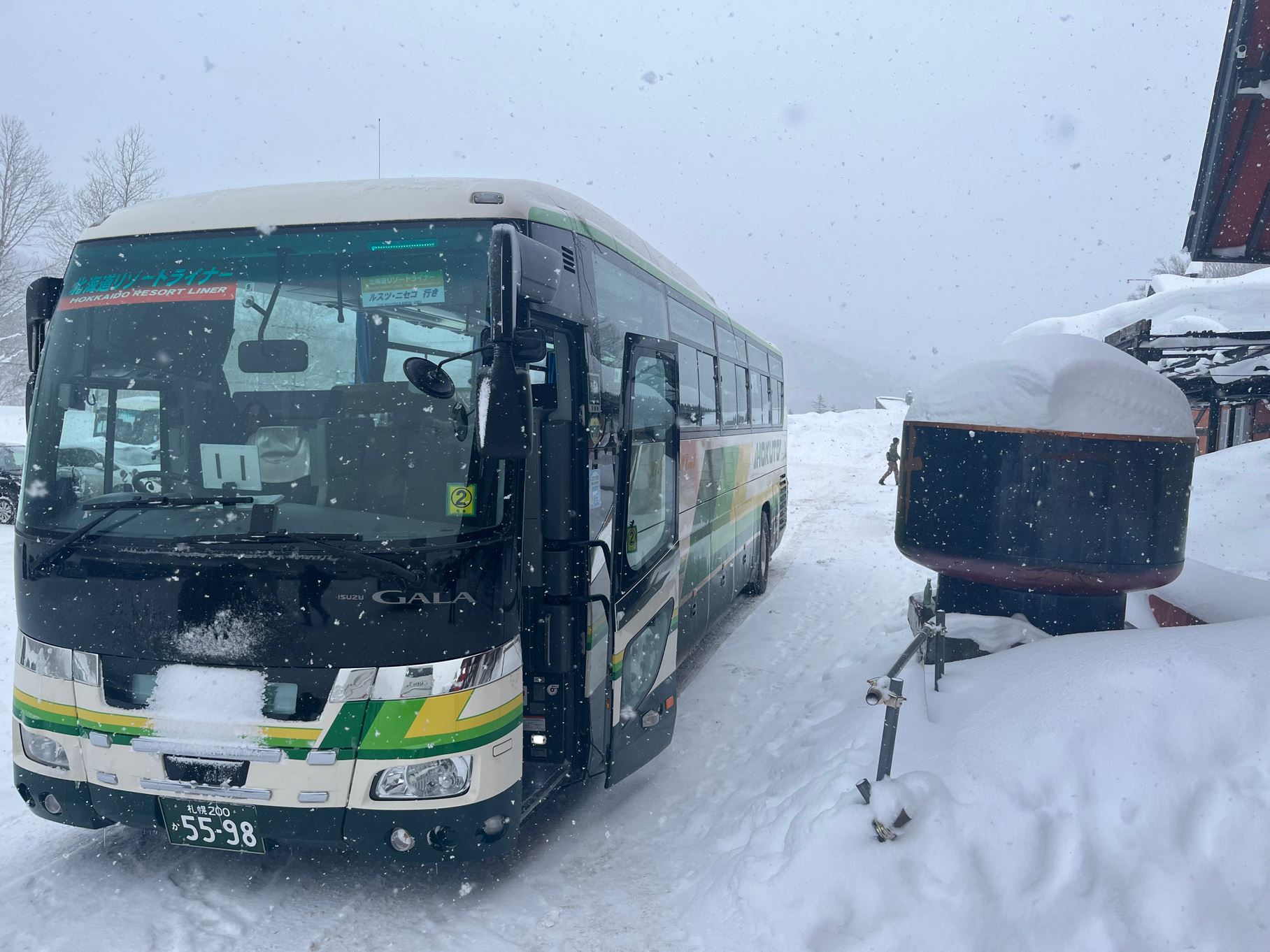
Hokkaido and the Niseko United Ski resort
Skiing was the first stop on our trip, the initial “main attraction”. At first, it was hard to believe the place, just some 400mi north of Tokyo, which was mild +5 - +9 degrees celsius, would be a frigid -15 and snowing all the time. Just landing in Sapporo was a good indication of how different the climate of Hokkaido is from mainland Japan: the airport was all in snow and outside was no “+” anywhere. Getting further and further into the “mountains” only lowered the temps and raised the hight of the snow walls outside the bus window. I say “mountains” because, for the most part, Japan is relatively flat with some peaks around 1km, mild slopes, wast territories. Nothing like the sharp cliffs of PNW, steep inclines and sharp ledges. Instead - very smooth lines of the hills and mountains, mildly settling into the below plains of agricultural land. At the time - covered with a very thick blanket of snow.
The Ski resort is a busy place. I wouldn’t say it’s busier then the resorts of PNW or Europe - to the contrary. It’s rare to see the lines on the chairlifts and there are some - that’s usually for the freshest morning pow or on a “very good day”. It’s just much busier then other places in Hokkaido, especially when it comes to dining. Apparently the resort popularity is rising faster than the infrastructure is able to keep up: the shuttles are full of people and dining in the evening is an hour wait. You can choose which hour to wait though: you can wait for an hour before the opening outside - then you’ll be the first to come in. You can wait an hour after the first people come in and dine - then you’d be the “second wave”. Or you can wait an hour after dinner - and catch the tail of the service time, when most have have their food this way or the other and places have run out of most popular dishes. You may choose when, but you can’t escape the wait: the places are just too small for the amount of people that want service and they refuse to work extra hours/tables/etc. Remember what I wrote above about punctuality - there it comes right back at ya. Of course you can reserve a place, call in advance, say, a couple weeks in advance. Then you won’t have to wait - you’ll just have to spend a lot :). Most places do not take reservations and those that do - expect you to “have an experience”, so not “quick chow”. And of course you can do a food truck, of which there are quite a few, serving okay food at less-than-okay prices. Have it at -10c outside, standing. It’s a type of “fun” I did not try - was too sober this trip for it.
The skiing itself is quite a treat: the snow is perfect, the slopes are not aggressive, the lines, as mentioned, are okay. Whatever is marked blue in PNW/Europe is back/double-black here, so it’s pure fun and joy, with lots of snow, riding through the plains and trees. Because there’s so much snow avvy gear is a must: it’s easy to get buried in so much snow, or get into a crack, created by snow sliding on bamboo leaves. You’d better have a buddy. This amount of snow allows for lots of fun jumps and tricks, once you’ve scouted the areas, which there is quite a bit to scout. Niseko United is actually four resorts, joined together into one system: Niseko(Village), Grand Hirafu, Hanazono and Annupuri. You would notice how the resort developed, expanded, added new chairlifts and gondolas, sometimes just forsaking the old ones.

The chairlifts and infrastructure, for the most part is quite old. The cabins are not fitted to carry the modern, wider skis. Some chairs are a flat wooden seat(single or double), attached to a metal tube/rod, going quite slowly up the mountain. The are newer chairlifts too: sprinkled here and there, they have very simple naming: quad-1, dual-2…etc. Not like “The Forest Queen” in PNW. Some might say this lacks character. I’d agree, and say that you always know how many people the char takes though. Not that it’s that important. Some of them are open, some have an auto-closing/opening plastic hood to help with the winds and snow, which are quite frequent and need some getting used to, especially for those of us, who are that 6 ft mark.
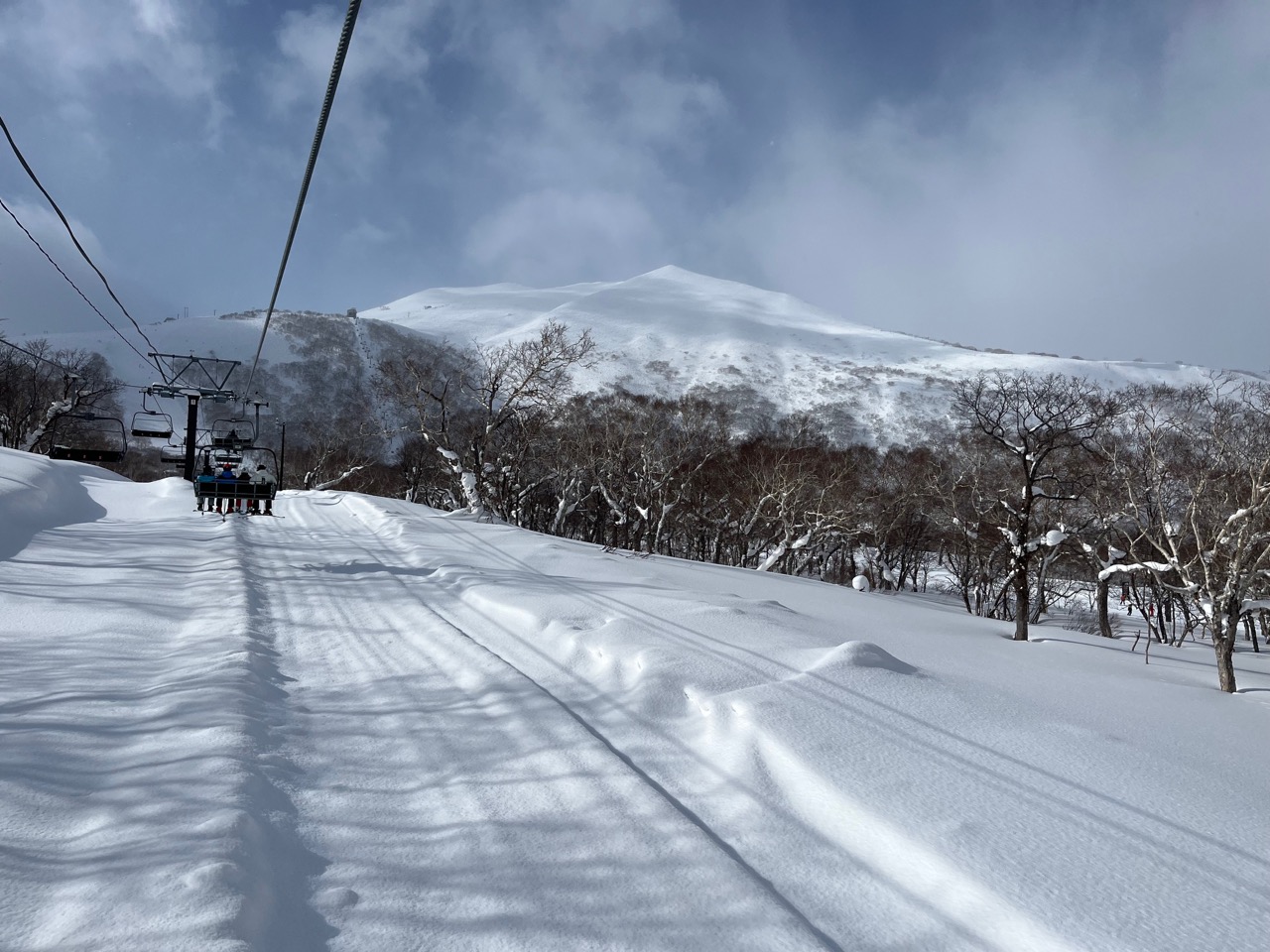
It’s clear the chairlifts and the tracks were made by japanese for japanese: the chairs are small and efficient. The runs are medium length and quite mellow, extra wide. Anything that has “bumps” is immediately classified as “black diamond”. In my observation most japanese skiers come with narrow skis and use the flat tracks to race up/down. There are much more boarders though. It’s the foreign, who come with fat skis and venture of-piste. Locals ski quite “average” on average and prefer an easier entry board to spend their time on the snow. Which they spend little of: the lift starts at 9am, and goes till 3-4pm. There is night skiing, but very few take advantage of it. Minding the lines at lunch, you get yourself 4-5hrs of skiing or barding and then it’s up for bars, food and onsens.
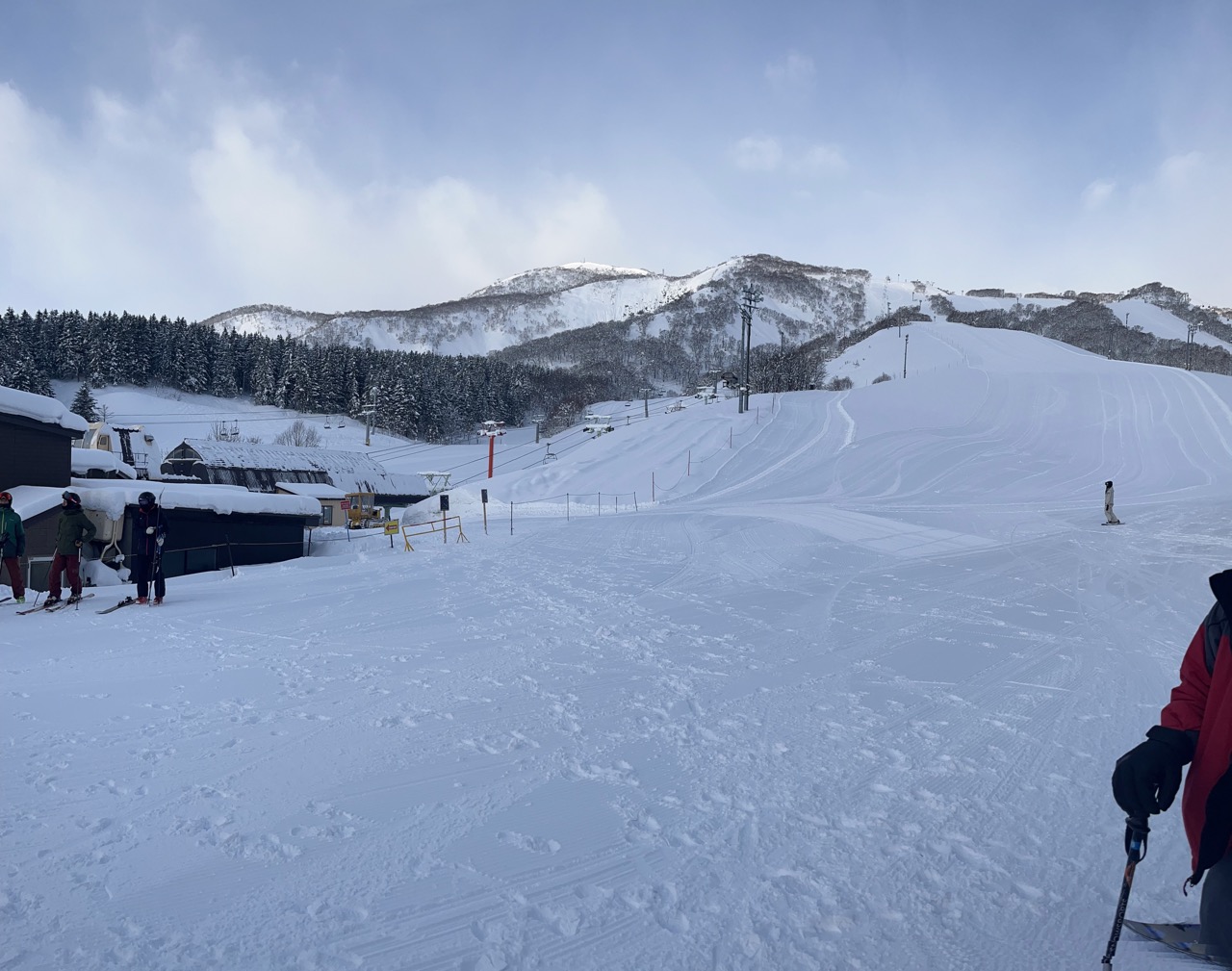
Onsen(s)
Onsen is effectively a pool, either inside or outside, about knee deep, filled with hot water of volcanic origin(that is - heated by mother earth and delivered into the pool by some intricate piping). The water comes out around 60C and makes staying in pool comfortable even when it’s -5C outside. No clothes, gender separated. I do not think Japanese ever concerned themselves with the question of gender fluidity when it comes to administering onsens. This thought never crossed my mind while being there. Being as traditional as they are, even being gay might be tough in Japan. Anyhow, you walk, after taking a shower, through entire pool dangling your privates in front of everyone, land in a free spot and stay submerged for the next 5-10 minutes. After that, less you’d like to become a human sous vide, you’d need to cool off. Different onsens provide different options for that, ranging from simply standing, or sitting on little benches organized around the pool, to cooling off in a cold water bath, conveniently located next to a conventional dry sauna. Outside some might take advantage of the walls of snow around the water. All around onsen is a great way to spend a couple hours meditating after a day of skiing or other outdoor activities. It’s open from 5am and till 11pm, so if you did not get into an onsen while being in Japan - that is definitely by choice :).
Tokyo
Done with skiing we went back to Tokyo. Enormous city, home to some 40 million people in the larger metro area actually feels quite spacious and not cramped with people. The huge, well run underground metro system makes the streets almost void of cars. And the fact that you need to buy a parking space before you’re allowed to purchase a car. And I haven’t seen too many parking spaces. Instead lots of people bike. Some(further from downtown) parts of the city are better equipped for bikes with special lanes and street signs. Some are are bare-bones spray paint available for bikers to share the road with cars. Since there are, again, few cars, biking in the relatively flat Tokio makes a lot sense, if, for some reason, you do not want to move by subway. Subway is very nice and clean, not too crowded during daytime hours and a perfect way of moving around the city quickly and efficiently. I wouldn’t take a bike, as long as I had JPY left on my metro card. Japanese love little gardens and the city is sprinkled with them, most areas having a few. There are trees to the sides of the road and everything is clean an tidy. No trash cans almost anywhere, but it’s very clean and orderly around. Haven’t seen any bums.
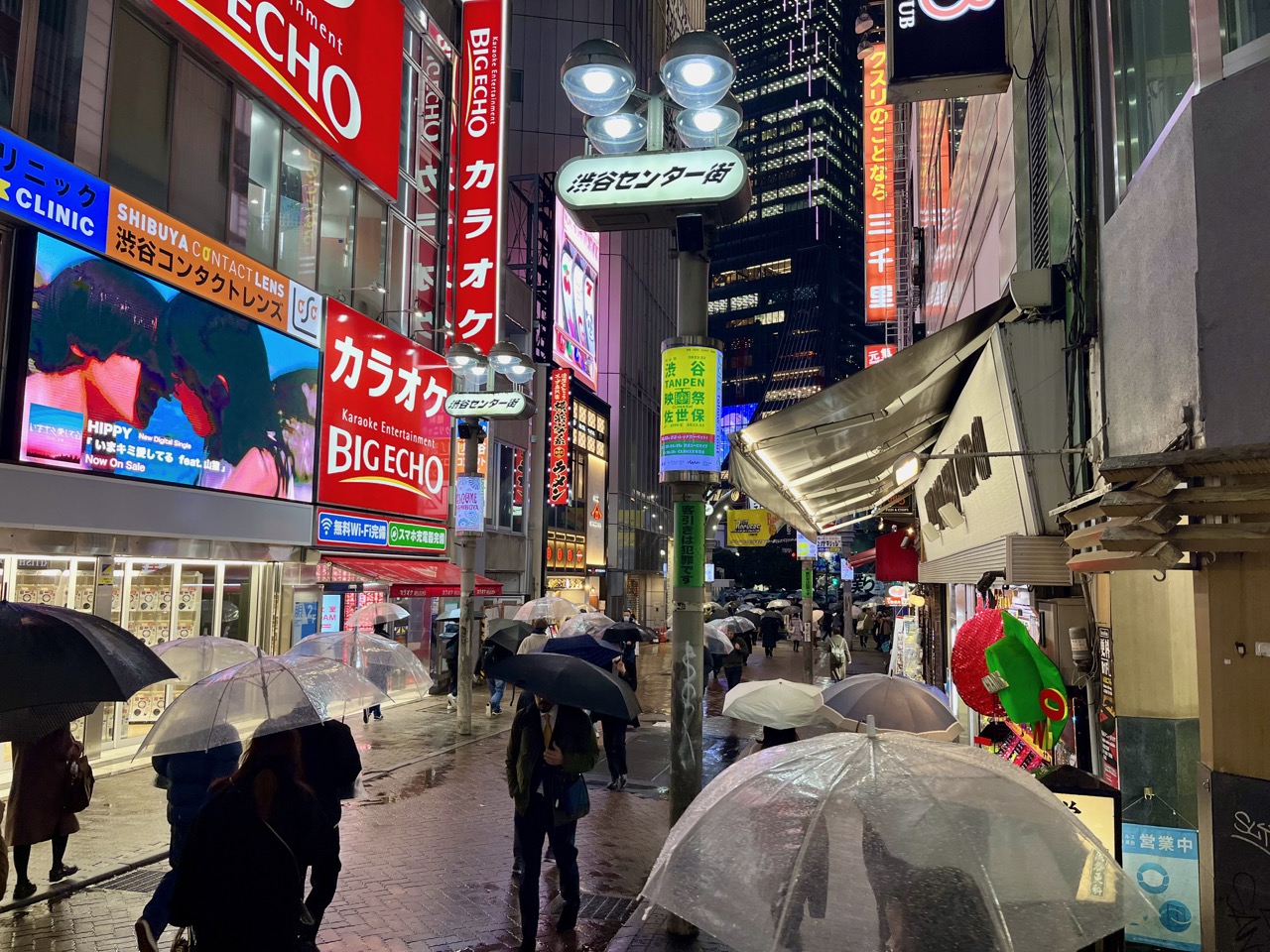
The city has completely taken over the rivers, building metro lines and bridges over them, such that the river keeps flowing underneath, yet with little to enjoy. This is not a great site, and, imho, goes quite against japanese love for natural beauty and perfection. Tokyo has a lot of different thematic districts: arts, museums, tech, anime, (fish)markets, transportation, bar, historical, etc. We haven’t visited them all, but felt like Tokyo has enough to have you wondering the streets for a month and keep discovering something completely new. The streets seem to be quite safe, even in the dusk and night: we haven’t observed any violence of any kind. Nor the wailing of the sirens of a police or first aid car. One thing that I missed from the trip, was certainly the automotive district with the Tokyo drift. well… another time.
Kyoto
The thing I haven’t missed, was riding the Shinkansen. Turns out Shinkansen is a network of trains and destinations. All quite pricey(or just similar to Europe train fares), but nonetheless thrilling. Traveling at an average of 280-300 kmph those trains get your across the country in less-then-a-day, which is very convenient. There’s lots to do in Tokyo, yet if you want to see and learn about historic Japan - Kyoto is the place to go. Kyoto is riddled with shrines and temples, castles and worship places. Walking the streets of Kyoto you’d be running into them evey 20 minutes and if you’re determined to visit a set of things - there are days to be filled easily. We came in for 2 nights and barely got the smallest subset of ‘important’ places visited. Even though Kyoto itself isn’t very large, you’d be spending at least an hour at each place and of those - there are, as I mentioned, plenty.

For added experience(s) you can book a traditional Japanese AirBnB, instead of a regular hotel, which would immerse you even more into the Japanese ways: those of minimalism and humbleness. You’d be staying in a relatively wells-sized apartment, with quite short ceilings, gaping holes in the doorways(including the outside ones) and very few items of furniture. There will be minimal heating as well as minimal ventilation. Miniscule showers and tiny restrooms. Pass-by kitchen and a dining room fashioned in place of a former parking spot. Very traditional, minimalist japanese style. With a tiny garden in the back of the property, not properly taken care of by the visitors, of course. It is an experience, I definitely recommend it, especially if you’re staying for a night or two: this way the ways and planning of the palaces and castles you’d visiting on your day walks would make so much more sense. If you’re quite sensitive to your accomodations and prefer space and warmth, better book a hotel instead. It’ll be small, but at least would have a decent shower and be well insulated.
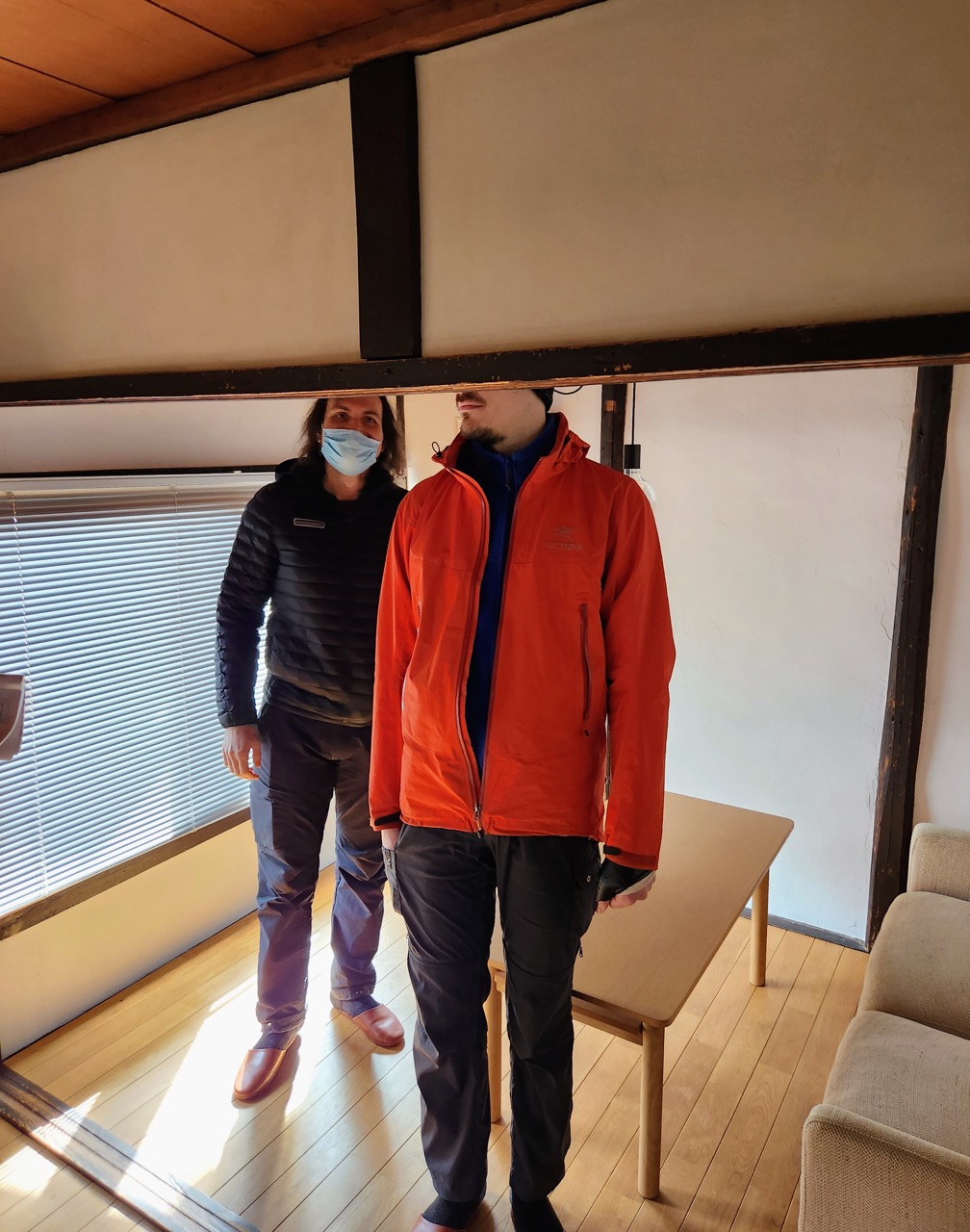
Natural Japanese beauty
I’ve mentioned that most places in Japan are very beautiful: the trees are well kept, the streets are all clean. The pathways are all maintained. No trash or wild grass/mud anywhere. Facades of the buildings, even those that are quite old, are looking quite descent and, most of all, are in harmony with the surroundings. All looks naturally perfect. Naturally: there isn’t plastics, or much man-made materials around. The trees seem to just grow of the right shape, the grass seems to just be of the same consistency, even the shrubs seem to “behave”. But, of course, that can’t be so “naturally”. Japanese put a lot of effort every day to maintain this eye candy. They wake up very early and wipe, re-arrange and correct all the altars. They sweep the streets relentlessly and wipe the windows, tables and benches with no less vigor. They prune each and every tree and go as far as to mold the tree branches with wires while they are the youngest seedling.
As a result the tree becomes “naturally” symmetric and pleasing to look at. After years of fighting against the wire and relentless pruning, the tree is of it’s “natural” “beautiful” “shape”. I find this to be a very profound, permeating and powerful trait of Japan. Probably the one thing that made the strongest impression on me.
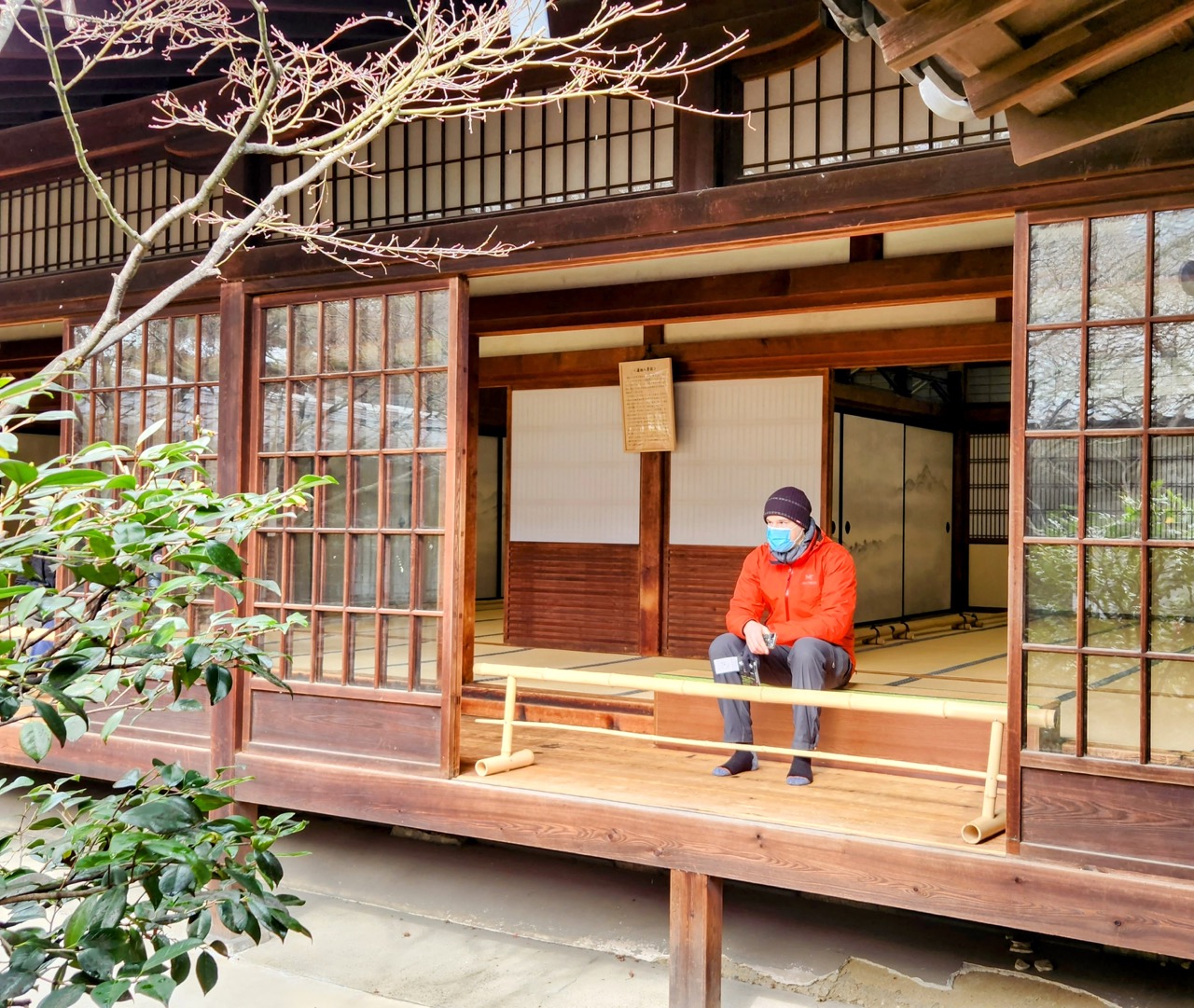
Japanese food(and drinks)
Two things were hard to find in Tokyo: good vegetarian food and good coffee. You can find them, but you’d really need to spend some time looking. The staples of Japanese food seem to be rice, pork, beef and fish(also, my favorite, kitsune tofu, but that’s mostly available only in Hokkaido). Rice is usually offered without limits, i.e. “take as much as you need from that huge rice cooker over there”. Pork usually costs less, beef costs more and fancy sushi would be the most expensive. Japan is a heaven-on-earth for a carnivore eater who likes freshly cooked food. The ramen and gyoza are delicios; yakitories are a sizzling street awesomeness, especially if you find a place with good sauces. Japanese like to eat skins and innards just as much as they like to eat pure meat. Pure groseness to me :).
After a couple weeks staying there I found myself missing good vegetarian food and regular bread. The abundance of rice and heavy-sauced meat was overwhelming, the salads were non existent, or underwhelming. I was quite happy to go back: especially now knowing SEA really has quite a few authentic places for ramen and katsu - just the way you’d get it in Japan.

wrapping up
Japan is a very mellow, family and senior friendly country. It’s a homeland of imported goods and customs, polished to perfection by 100s of years of island isolation. It’s a unique country, very easy and pleasant to travel through, filled with people living the lives of minimalistic ascetism, very punctual and friendly, devoted to whatever was called their life’s vocation. It’s a place to visit for fresh sea food, stunning “natural” view and serene meditations. Being one of the most quiet and non-disturbing places on Earth Japan would definitely stay quite high on my “visit-again” list. I packed my bags full of fresh, individually packaged sweets, tea, cookies and other tasty things, cursing my choices of “reasonable” luggage, not being able to host all of the packages and bottles I now wanted to take back with me either as presents or as personal treats. Lessons learned for the next travel…